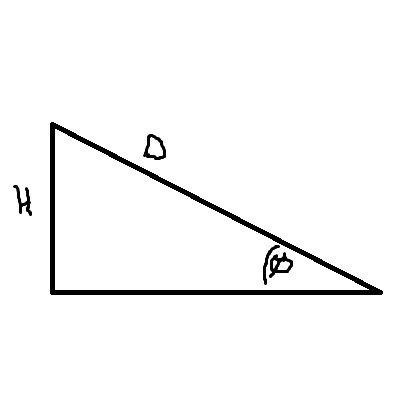

Starting from rest, assuming no friction, how long would it a mass of M at the top of the incline take to get to the bottom of the inclined plane shown above?
So I'm not sure exactly how to approach it here. On one hand, I know it's not just 1/2gtsq=h, gravity is mgsinO and is towards the angle. I thought about using d=1/2xt^sq but I don't think that's right either. So then in a convoluted way; I did:
vfsq = 2(mgsinO)(d)
vf=vo+at -> rad[2(mgsinO)(d)] / mgsinO = t
Am I right, wrong, easier way, etc.
